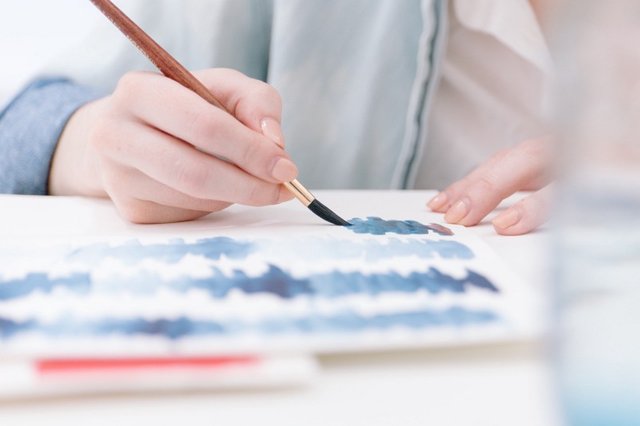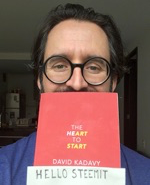Who is Getting Art Done for? (and who is it not for?)

I’ve been thinking about who Getting Art Done is for. I’ve also been thinking about who it is not for.
Getting Art Done is about maximizing creative output by working with your energy cycles. It’s about harnessing and focusing your best creative energy.
I discovered in the course of writing about the seven mental states that much of the GAD methodology can be used not only for creativity, but also for other “hats” one might wear, such as an executive.
It’s just a matter of prioritizing the key mental state involved in wearing that “hat.” So if you’re an executive, you’d prioritize for “Prioritization.” Every decision you made about how to manage your fluctuations in discipline, or how much mental effort a given project would take, would be to make the most of your Prioritization thinking.
That could be very powerful. There’s a couple problems though.
- I don’t really care about making executives more effective. Nothing against executives. I just really care about art. I care about people bringing their creative gifts into the world.
- I don’t have the credibility triggers for a general productivity book. Yes, I could go ahead and write one. But I feel if you’re going to write a book for executives, you’d better have experience coaching executives. David Allen had 20 years of experience coaching executives before writing Getting Things Done.
Something about being a general “productivity consultant” lends itself to writing a general productivity book. You can use your own advice to grow your business. You’re an executive coaching other executives.
Something about a creative, coaching other creatives, doesn’t work as well. If you’re spending your energy being the executive of a business coaching creatives, you’re spending your energy being an executive. You eventually lose touch with what it means to be an artist.
This is a problem you’ll see everywhere. It’s a problem I ran into writing Design for Hackers. I stopped thinking of myself as a “designer” well before I wrote D4H. I made a conscious decision to be a better writer and teacher. That meant I didn’t have much time or energy for design.
As a result, if you’re hiring a designer, I wouldn’t be your best choice. But I do think I’m a much better write and teacher than I could have been if I had continued to design.
I believe I have more credibility triggers for writing a book on optimizing creativity than I do for a traditional productivity book:
- I’m an experienced creative, in a variety of disciplines. I worked as a professional designer, I’ve written books, I produce and host a podcast. As an amateur I dance, I’ve painted and done ceramics, improv, acting. I love to create in many forms.
- I’ve talked to lots of creatives. I love breaking down a creative’s process on my podcast. I’ve talked to a chef, dancers, a screenwriter, a set designer, an actor, and will soon talk to a musician. I continue to see GAD patterns across all of these creative fields.
- I still have some traditional productivity street-cred. I’ve been writing about productivity for more than ten years on kadavy.net. I worked with behavioral scientist Dan Ariely on a productivity app that sold to Google.
So, I think I’m well poised to talk about the main idea behind GAD:
Traditional productivity is at odds with creative productivity.
Yes, traditional productivity ideas such as time management, prioritization, and attention management are all critical to being a productive creative.
But creative productivity requires a looser grip on these concepts. You have to make space for the fact that:
- Rest is critical to creative insights. Incubation promotes creative solutions.
- There’s some randomness to creativity. You can’t always be sure that you’ll reach a solution in a given amount of time. You can’t be sure that a solution will always be “on-target.”
- Creativity takes time. Great insights require that you program the raw materials into your long-term memory. It’s physiologically impossible to do this quickly.
At the same time, if you want to create, you can’t simply wait for inspiration to strike. You have to produce. So, how do you produce with the reliability of a machine, while still maintaining the spirit of an artist?
Aside from this, there’s a prediction I have that bolsters the concept of the book: Traditional productivity will be taken over by creative productivity. It will no longer be special that you can juggle a schedule and prioritize and crank out more work in less time. A computer can do that, and more and more, computers will do that.
So what’s left? What’s left is that which only humans can do. Art connects us because art is uniquely human. When the robots take over, our creativity will be what makes us special.
Additionally, traditional productivity is limited. You can only crank out so many widgets in a certain amount of time. But creative productivity is infinite. There is no upper limit to the potential of a single idea.
So maybe the strategy of GAD is to nail the creative productivity book for artists, while believing that the executives will need what the book teaches anyway?
GAD is for artists. GAD is not for everyone else. But everyone is an artist anyway, so I guess it all works out.
I quadrupled my creative productivity. Sign up and I'll send you the tools I count on »

I feel I could use these tips in other facets of my life as well.
Hello @kadavy, thank you for sharing this creative work! We just stopped by to say that you've been upvoted by the @creativecrypto magazine. The Creative Crypto is all about art on the blockchain and learning from creatives like you. Looking forward to crossing paths again soon. Steem on!
Cool to learn about your project! Thanks for the upvote, just followed.